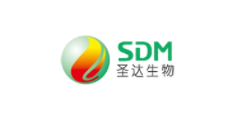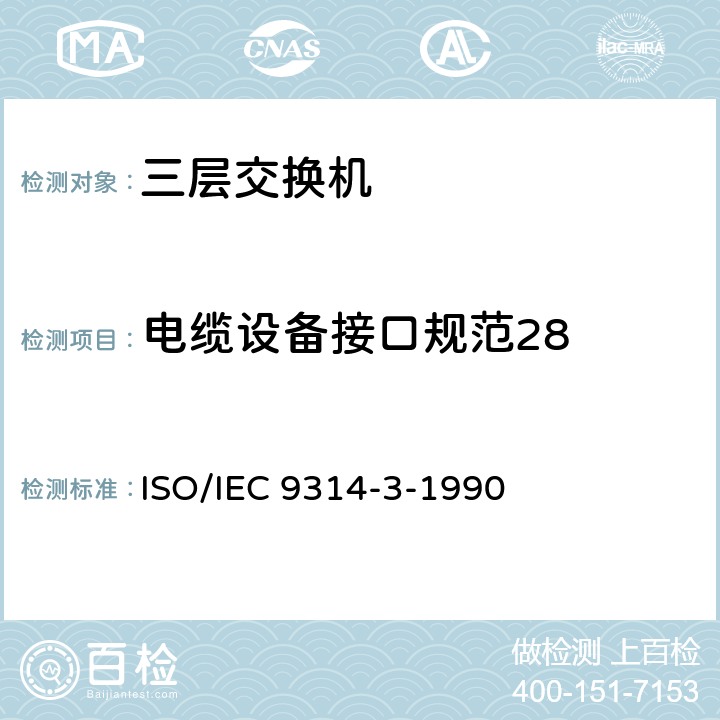SIS SS-ISO 9314-1-1989 信息处理系统.光纤分布式数据接口(FDDI).第1部分:令牌环网物理层规程(PHY)
百检网 2021-08-03
标准号:SIS SS-ISO 9314-1-1989
中文标准名称:信息处理系统.光纤分布式数据接口(FDDI).第1部分:令牌环网物理层规程(PHY)
英文标准名称:Information processing systems — Fibre Distributed Data Interface (FDDI) — Part 1: Token Ring Physical Layer Protocol (PHY)
发布日期:1989/9/13 12:00:00
实施日期:1999/12/31 12:00:00
适用范围:This part of ISO 9314 specifies the Physical Layer Protocol (PHY), the upper sublayer of the Physical Layer, for Fibre Distributed Data Interface (FDDI).FDDI provides a high-bandwidth (100 Mbit/s), general-purpose interconnection among computers and peripheral equipment using fibre optics as the transmission medium. FDDI can be configured to support a sustained transfer rate of approximately 80 Mbit/s (10 Mbyte/s). It may not meet the response time requirements of all unbuffered high-speed devices. FDDI establishes connections among many stations distributed over distances of several kilometers in extent. Default values for FDDI were calculated on the basis of 1 000 physical links and a total fibre path length of 200 km (typically corresponding to 500 stations and 100 km of dual fibre cable).FDDI consists of:(a) A Physical Layer (PL), which is divided into two sublayers:(1) A Physical Medium Dependent (PMD), which provides the digital baseband point-to-point communication between stations in the FDDI network. The PMD provides all services necessary to transport a suitably coded digital bit stream from station to station. The PMD defines and characterizes the fibre-optic drivers and receivers, medium-dependent code requirements, cables, connectors, power budgets, optical bypass provisions, and physical-hardware-related characteristics. It specifies the point of interconnectability for conforming FDDI attachments.(2) A Physical Layer Protocol (PHY), which provides connection between the PMD and the Data Link Layer. PHY establishes clock synchronization with the upstream code-bit data stream and decodes this incoming code-bit stream into an equivalent symbol stream for use by the higher layers. PHY provides encoding and decoding between data and control indicator symbols and code bits, medium conditioning and initializing, the synchronization of incoming and outgoing code-bit docks, and the delineation of octet boundaries as required for the transmission of information to or from higher layers. Information to be transmitted on the interface medium is encoded by the PHY into a grouped transmission code. The definition of PHY is contained in this part of ISO 9314.(b) A Data Link Layer (DLL), which controls the accessing of the medium and the generation and verification of frame check sequences to ensure the proper delivery of valid data to the higher layers. DLL also concerns itself with the generation and recognition of device addresses and the peer-to-peer associations within the FDDI network. For the purpose of the PHY definition contained in this part of ISO 9314,references to DLL are made in terms of the Media Access Control (MAC) entity, which is the lowest sublayer of DLL.(c) A Station Management (SMT)1), which provides the control necessary at the station ievel to manage the processes under way in the various FDDI layers such that a station may work cooperatively on a ring. SMT provides services such as control of configuration management, fault isolation and recovery, and scheduling procedures.The definition of PHY as contained in this part of ISO 9314 is designed to be as independent as possible from the actual physical medium.ISO 9314 specifies the interfaces, functions, and operations necessary to ensure interoperability between conforming FDDI implementations. This part of ISO 9314 is a functional description. Conforming implementations may employ any design technique that does not violate interoperability.
中文标准名称:信息处理系统.光纤分布式数据接口(FDDI).第1部分:令牌环网物理层规程(PHY)
英文标准名称:Information processing systems — Fibre Distributed Data Interface (FDDI) — Part 1: Token Ring Physical Layer Protocol (PHY)
发布日期:1989/9/13 12:00:00
实施日期:1999/12/31 12:00:00
适用范围:This part of ISO 9314 specifies the Physical Layer Protocol (PHY), the upper sublayer of the Physical Layer, for Fibre Distributed Data Interface (FDDI).FDDI provides a high-bandwidth (100 Mbit/s), general-purpose interconnection among computers and peripheral equipment using fibre optics as the transmission medium. FDDI can be configured to support a sustained transfer rate of approximately 80 Mbit/s (10 Mbyte/s). It may not meet the response time requirements of all unbuffered high-speed devices. FDDI establishes connections among many stations distributed over distances of several kilometers in extent. Default values for FDDI were calculated on the basis of 1 000 physical links and a total fibre path length of 200 km (typically corresponding to 500 stations and 100 km of dual fibre cable).FDDI consists of:(a) A Physical Layer (PL), which is divided into two sublayers:(1) A Physical Medium Dependent (PMD), which provides the digital baseband point-to-point communication between stations in the FDDI network. The PMD provides all services necessary to transport a suitably coded digital bit stream from station to station. The PMD defines and characterizes the fibre-optic drivers and receivers, medium-dependent code requirements, cables, connectors, power budgets, optical bypass provisions, and physical-hardware-related characteristics. It specifies the point of interconnectability for conforming FDDI attachments.(2) A Physical Layer Protocol (PHY), which provides connection between the PMD and the Data Link Layer. PHY establishes clock synchronization with the upstream code-bit data stream and decodes this incoming code-bit stream into an equivalent symbol stream for use by the higher layers. PHY provides encoding and decoding between data and control indicator symbols and code bits, medium conditioning and initializing, the synchronization of incoming and outgoing code-bit docks, and the delineation of octet boundaries as required for the transmission of information to or from higher layers. Information to be transmitted on the interface medium is encoded by the PHY into a grouped transmission code. The definition of PHY is contained in this part of ISO 9314.(b) A Data Link Layer (DLL), which controls the accessing of the medium and the generation and verification of frame check sequences to ensure the proper delivery of valid data to the higher layers. DLL also concerns itself with the generation and recognition of device addresses and the peer-to-peer associations within the FDDI network. For the purpose of the PHY definition contained in this part of ISO 9314,references to DLL are made in terms of the Media Access Control (MAC) entity, which is the lowest sublayer of DLL.(c) A Station Management (SMT)1), which provides the control necessary at the station ievel to manage the processes under way in the various FDDI layers such that a station may work cooperatively on a ring. SMT provides services such as control of configuration management, fault isolation and recovery, and scheduling procedures.The definition of PHY as contained in this part of ISO 9314 is designed to be as independent as possible from the actual physical medium.ISO 9314 specifies the interfaces, functions, and operations necessary to ensure interoperability between conforming FDDI implementations. This part of ISO 9314 is a functional description. Conforming implementations may employ any design technique that does not violate interoperability.
百检能给您带来哪些改变?
1、检测行业全覆盖,满足不同的检测;
2、实验室全覆盖,就近分配本地化检测;
3、工程师一对一服务,让检测更精准;
4、免费初检,初检不收取检测费用;
5、自助下单 快递免费上门取样;
6、周期短,费用低,服务周到;
7、拥有CMA、CNAS、CAL等权威资质;
8、检测报告权威有效、中国通用;
客户案例展示
相关商品
版权与免责声明
①本网注名来源于“互联网”的所有作品,版权归原作者或者来源机构所有,如果有涉及作品内容、版权等问题,请在作品发表之日起一个月内与本网联系,联系邮箱service@baijiantest.com,否则视为默认百检网有权进行转载。
②本网注名来源于“百检网”的所有作品,版权归百检网所有,未经本网授权不得转载、摘编或利用其它方式使用。想要转载本网作品,请联系:service@baijiantest.com。已获本网授权的作品,应在授权范围内使用,并注明"来源:百检网"。违者本网将追究相关法律责任。
③本网所载作品仅代表作者独立观点,不代表百检立场,用户需作出独立判断,如有异议或投诉,请联系service@baijiantest.com

















